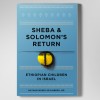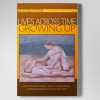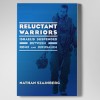“This Justifies a Life: Lanzmann’s Memoir and Yom HaShoah”
By Nathan Szajnberg, MD
To write such a book, one must live a full life. For Claude Lanzmann — Shoah’s filmmaker, Simone de Beauvoir’s lover, Sartre’s confidant — this is a memoir of several lives, all his.
And several near-deaths: as a fifteen-year old resistance fighter against the Nazis in France, ambushing SS convoys; near-drowning off Ceasaria’s Beach (feeling guilt for promises made); mad voyages at de Beauvoir’s demand; walking through a plate glass window to halt a parking citation (severing an iliac vessel); flying gliders or F16’s. Much was driven by passion, as is much of his life.
He begins with guillotines; how could one lop his head? “I have no neck….my shoulders and my aggressively defensive posture, forged gradually night after night by the nightmares that followed the primal sense of Lesurques’ death (by guillotine), which transformed (my shoulders) into a fighting bull’s morillo, neck muscles so impenetrable, the blade glances off…” (3).
He marches us through his life: a forced march, yet one taken willingly, at times breathlessly, through his mother’s childhood abandonment, his father’s refuge from Vichy. Little is gussied up; much laid bare. When he sees his mother again, years later, he yearns for her, yet within hours escapes her madness erupted in a shoe shop.
Passion pulsates through his life. When his fifteen year old sister shows up in Paris, he introduces her to the then-married Deleuze, Claude feeling ö…a helpless witness to something inevitable”: Deleuze seduces the girl, dumps her, asks Claude to tell her. When brother then introduces her to Sartre, Claude feels foreboding, even as he follows through and follows Sartre’s standard seduction/abandonment. He discusses this with de Beauvoir, who upon taking him as her “sixth man,” insists on joint vacations with Sartre, alternating dinners with him, and dinners a trois. Of de Beauvoir, he begins, “I loved the veil of her voice, her blue eyes, the purity of her face and more especially of her nostrils…” After his sister’s suicide, Lanzmann continues with Sartre and Beauvoir for some years. He admires the thinking Sartre until that thinker becomes a mockery of himself.
Most of this book tells of his life in full; only the last hundred pages begin the journey through “Shoah.” But, Lanzmann’s life explains how he could both conceptualize this …”vast choir of voices …. (who) testif(y) in a true construction of memory,” how he could dedicate over twelve years making this film. Seeking funds, when asked to write a “treatment,” he can’t comply: he needs to follow two drives: first, the stories to be told of the murdered by the living; second, his inner voice which demands “my desire would prevail …over everyone and everything.” He does not call those living, “survivors,” rather, revenants (dreamers): they are awakened by his presence and the presence of the haunted. His speakers bolt upright and face us, like the dead in Dante’s Inferno when they sense someone alive amongst them. And like those vaulted almost alive in Dante’s presence, these revenants speak their haunted dreams to us listeners, then they retreat to their living coffins of memory. Lanzmann insists for this film, “the living would be self-effacing so that the dead might speak through them…there would be no I.” In this nine hour film, Lanzmann himself is rarely glimpsed, rarely heard.
Here is a man. A man who believes in truth’s power. “…hard-heartedness…melted in the face of the work of truth.” No post-modern relativist, he does not find that histories are constructions; didn’t really happen “that way.” He gives us stories of emotional power that convince us we hear truths. We learn much from him, from his work, from his voices. This courageous man (from the root, “coeur,” heart) reveals “The question of courage and cowardice…is the scarlet thread that runs through this book..through my life” (27). Psychoanalysts might speculate that this explains why he lives so close to the precipice, as if to prove to himself his courage when he feels cowardice. But, this is between the man and his soul (and his analyst). For us, we are given stories that bring injustices to life, fight fascism in many forms, paint with words and images that reach into our own resonating souls.
In the early 1990’s, I saw Lanzmann display his blunt honesty and candor before the Western New England Psychoanalytic Society at a meeting held to screen an obscure documentary of a Nazi officer who allegedly saved the life of a fledgling medical student. The now-elderly psychoanalyst, Micheels, went to great effort to bring this European flick to New Haven. He invited Lanzmann, who screened the movie the night before our public meeting. After Micheels introduced the film and Lanzmann, we were to watch the show. Lanzmann excused himself. Said heÆd step out for a cigarette; said smoking not allowed in the building. When a senior analyst, Al Solnit, as I recall, permitted Lanzmann to cop a smoke in the auditorium during the movie, Lanzmann told us bluntly that he had seen the film once; that was more than enough. It was, in his view, psychological drivel: look at the nice tow-headed Nazi boy; his nasty too-demanding father, perhaps; the handsome young officer; how sad that he was forced to become a murder, an accomplice to butchers. Lanzmann told this gathering of analysts that such ôpsychologizingö of murderers — their unfortunate childhoods and such — embarassed our discipline and sullied the dead. Lanzmann wanted out. The audience burst into protests. One analyst stood erect, proudly declaiming that Americans believe in forming our own opinions, should watch for ourselves. Lanzmann demurred: gesturing with the unlit smoke readied between forefinger and thumb, he said go ahead and watch this; just don’t insist I have to watch it again. Because I won’t. His words seemed unabsorbed, as audience members and particularly Micheels appealed to the importance of watching this film of the fine SS officer. Lanzmann repeated his insistence: watch what you wish; I won’t watch it; call me when it is done. He stepped out to smoke (quite a few, given the length of the film). He returned for discussion. The film is unmemorable, except as intellectual pap. Lanzmann was principled as an artist, as a man. In this reviewer’s opinion, his judgement was dead on.
Throughout this book, we learn something of his creative process. Of Shoah’s editing, “…not one word of commentary…no voice- over to say what is about to happen, to tell the audience what to think, to connect one scene to the next.” The filmmaker trusts his speakers and us listeners to come to our own decisions, to think with feeling, to think hard and well. And also, to be moved (as in the sense of emotion). But, he believes that we have informed hearts. He also bristles at producers demands that he tell them plot lines and such. Rather, he takes time to mull, to sort, to sense the possibilities. Then, “The radiant solution suddenly came to me.” It is a radiant solution that he trusts.
This review’s title comes from Jean Daniel’s remark after seeing a preview of Shoah, after the nine hours of watching, an active looking and listening: “This justifies a life.” Such a remark tempts us psychoanalysts to wonder why he might feel the need to justify his life to begin with. This again, is between him and his analyst; we are not in the business of psychoanalyzing books. This bluntly honest man tell us early on, “I love life madly, love it all the more now that I am close to leaving it…” For us, letÆs be grateful that he has led this life, that he has given to us plentifully, including this memoir. Paul Celan, that tragic poet who could not tolerate living, who ended his life in the Seine after surviving the Nazis, wrote a poem of the living digging underground towards the dead. As if to touch the finger of the dead. In so doing perhaps the dead are in some way brought to life. And the living? Transformed. Lanzmann’s Shoah and now his book, Patagonian Hare transforms us.



